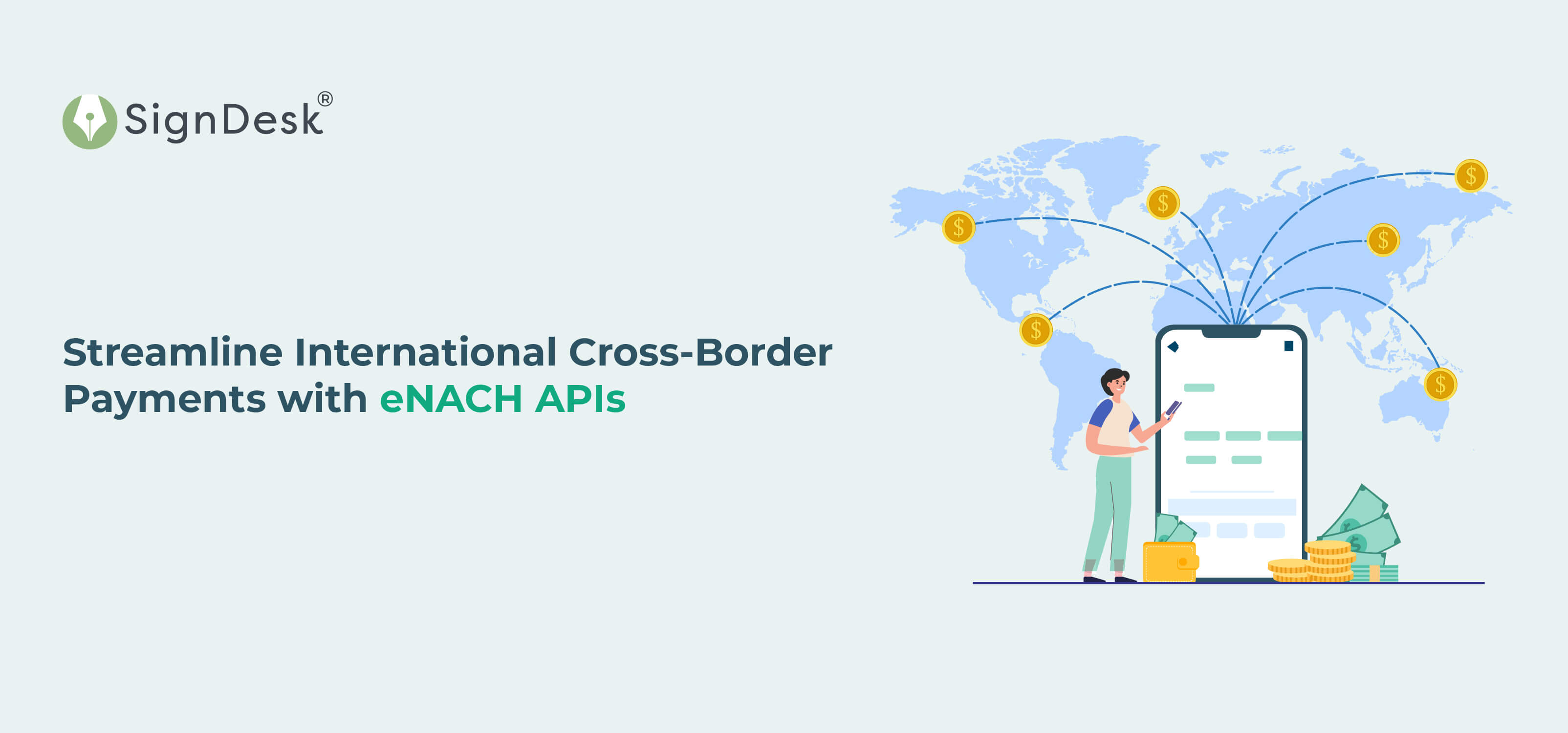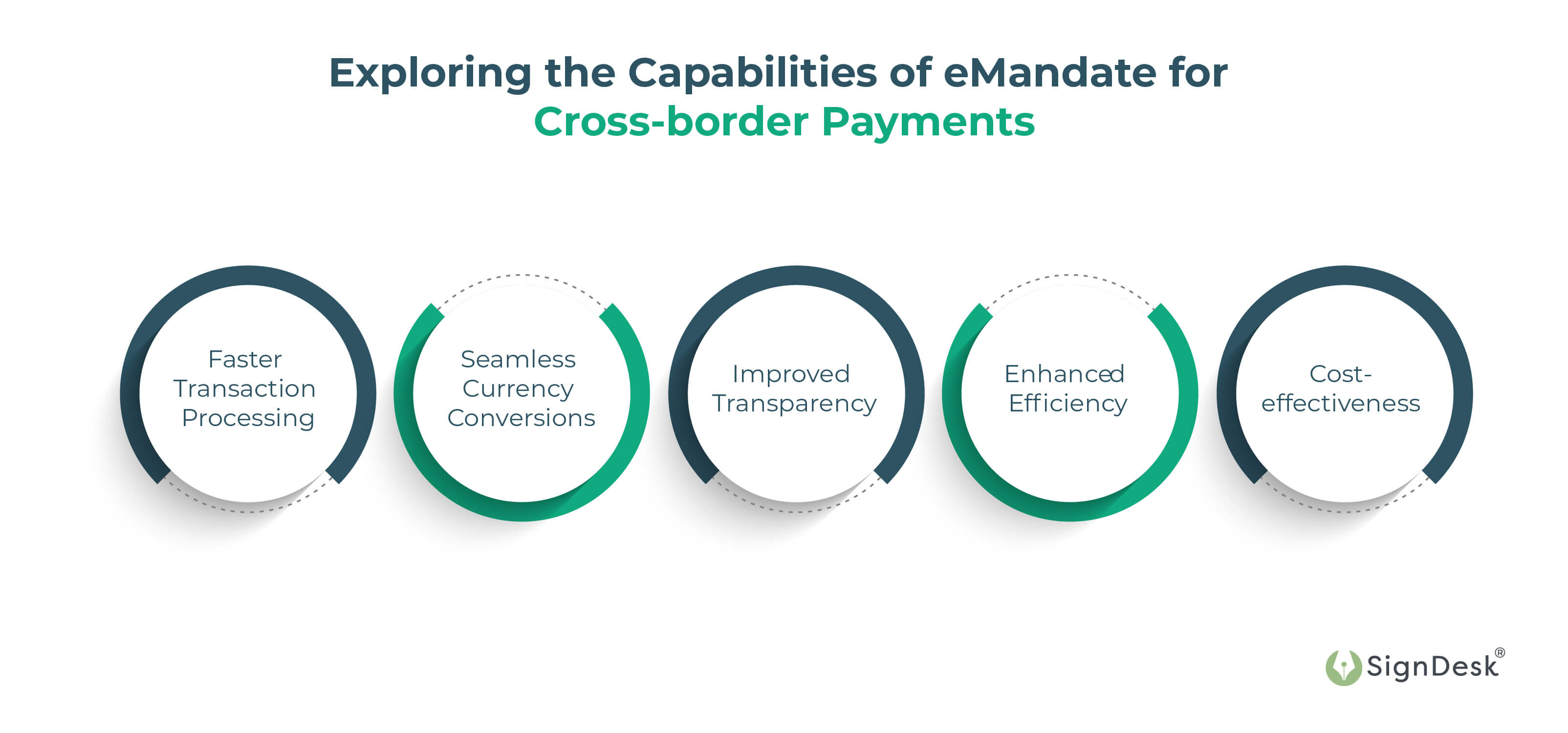Global Payment Landscape: An Introduction to Cross-Border Transactions
Cross-border payments are financial transactions involving the transfer of funds or assets, goods, or services, between individuals, businesses, financial institutions, and payment processors across international borders. Cross-border payments can be conducted through different methods, including wire transfers, online payment platforms, electronic funds transfers, credit card payments, e-money wallets, and correspondent banking relationships.

Cross-border payment infrastructures are mostly cost & time extensive, leading to high transaction fees and complex, lengthy processing methods. Embracing improved strategies empowers businesses with better ROI, more control over international trade, and enhanced payment security.
Domestic banks, financial institutions and payment systems, foreign transfer protocols, and authentication systems work as regulatory bodies to facilitate international payments. The process of cross-border payments has specific regulations and fee rates according to exchange rates and local taxes in each nation.
With technological advancement, online payment systems have evolved to enhance cross-border transactions’ speed, transparency, and cost-effectiveness as easily as domestic transfers. Fintech firms offer AI-based digital payment solutions for international payment methods to bring flexible payment options that deal in secure online payment platforms equipped with blockchains with real-time payments providing fewer transaction fees and faster processing duration with a broader global reach.
Understanding the Complexities of Cross-Border Transactions
Multilateral platforms encompass various entities across cross-borders and allow various participants. These platforms face risks, requirements, and challenges, such as high costs, low speed, limited access, and transparency, making the cross-border payment system vulnerable.
According to “Exploring multilateral platforms for cross-border payments – January 2023” by the Bank of Internation Settlements (BIS), there are multiple challenges that cross-border payment platforms face during international transactions.
- Legacy Technology Platforms – Legacy platforms have rudimentary limitations such as batch processing, real-time monitoring, low data processing capacity, and new payment messaging standards, resulting in settlement delays and trapped liquidity. These strictures pose challenges for cross-border payment automation with different legacy infrastructures that need to interact with each other and impede the entry of innovative international business payment methods and technologies.
- Fragmented and Truncated Data Formats – Payment messages update sender and recipient accounts, requiring adequate information for identity authentication and payment legitimacy. Varying data standards, formats, and translation challenges hinder automation, causing delays and escalating technology and workforce costs.
- High Funding Costs – Cross-border payments incur high funding costs as PSPs need to hold sufficient liquidity in all the currencies they transact. Limited currency exchangeability can tie up liquidity. Funding costs vary based on deferred net settlement (DNS) or real-time gross settlement (RTGS) systems, impacting liquidity intensity and credit risk. DNS is less liquidity-intensive than RTGS but requires more trust between participants, which may be difficult to achieve across jurisdictions with different legal frameworks.
- Long Transaction Chains – The participants of cross-border payments rely on a chain of linked correspondent banks and multiple intermediaries which can result in payment delays and difficulties in reconciling transactions. The longer transaction chains increase cost, processing time, and delays adding extra funding requirements with a slow and expensive cross-border payment process,impacting cash flow, operational efficiency, and customer satisfaction.
- Weak Competition – PSPs have limited access and cannot send or receive payments directly across borders. They find it difficult to expand to multiple jurisdictions and participate in several domestic payment systems. Different payment systems increase costs for end users and firms, impacting investment in cross-border online payment systems.
- Complex Processing of Compliance Checks – Inconsistent implementation of regulatory regimes for sanctions screening and financial crime requires repetitive checks, leading to delays and increased costs. Varied sources used by banks for checks can result in false flags. Complexity escalates with more intermediaries, lacking comprehensive data for compliance checks, hindering automation, and causing payment rejections.
- Limited Operating Hours – Bank account updates are limited to settlement system operating hours, causing delays in cross-border payments. Time-zone differences exacerbate the issue, requiring banks to hold excess cash to cover fluctuating exchange rates. Trapped liquidity increases transaction costs and hinders efficient clearing and settlement.
Risks Involved in International Payments
FIs and businesses struggle with many risks that come with the challenges. These risk barriers are classified as follows.
- Legal Risk – Cross-border operations of multilateral platforms entail legal risk arising from interactions between multiple statutory and regulatory frameworks across jurisdictions. These risks include uncertainty in applying laws, differing legal protections, and varying access criteria for online payment systems. Additional regulatory requirements, foreign equity caps, domestic processing mandates, and data residency rules hinder cross-border payments. Misaligned data frameworks and foreign investment controls further complicate platform establishment. However, efforts to align regulatory frameworks and monitor local laws & domestic authorities can help mitigate these risks and promote legal certainty.
- Operational Risk – Multilateral platforms operating across borders face significant operational risks, including deficiencies in information systems, cyber-attacks, and operational disruptions. Handling incidents involving multiple participants can be challenging, necessitating proper risk management. Reliance on third-party services and enforceability of contracts pose additional complications. Identifying and mitigating risks during the design phase is essential for cost-effective and successful platform operation.
- Illicit Finance Risk – Multilateral platforms face varying risks related to illicit finance, including money laundering, terrorist financing, and sanctions evasion. Competent authorities typically monitor compliance with sanctions for financial institutions. Identifying beneficiaries and originators from foreign jurisdictions can be challenging, increasing the risk. Reputational risk exists if platforms are used for illicit payments. Platforms must ensure data integrity and support anti-money laundering (AML) and counter-terrorist financing (CFT) compliance throughout the entire payment chain.
- FX and Liquidity Risk – Managing FX and liquidity risks can be challenging for cross-border payment platforms, especially when processing multiple currencies. These payment platforms face FX rate volatility, impacting liquidity risk management. Platforms may offer fixed FX rates for a limited period, sharing the risk with participants. Liquidity management may be constrained compared to domestic systems, as intraday liquidity support may be unavailable. Liquidity bridges between central banks and multilateral platforms may help solve this problem, but they are currently unavailable.
- General Business Risk – The viability of a multilateral platform depends on its ability to manage risks, achieve network effects, and address cross-border payment frictions. Network effects are mostly demand-driven, with more participants attracting additional PSPs. Fragmentation among multiple non-interoperable platforms can hinder scalability and profitability. Platforms that achieve economies of scale tend to lower operating costs per transaction, but high upfront costs and limited participant networks can make it challenging for new platforms to launch. Existing competitors may discourage participants from switching platforms.
Overcoming Challenges in Cross-Border Payments through eNach
Political instability, trade disputes, economic sanctions, or regulatory changes in different countries can introduce uncertainties and risks in cross border money transfer. Businesses must stay informed and adapt to the evolving geopolitical and economic landscape while ensuring regulatory compliance.
SignDesk’s eNach-powered API-integrated payment platform can help FIs and businesses make b2b cross-border payments in a single compliant platform. International business payments face many challenges of fraudulent activities, cyber threats, payment delays, reconciliation, and geopolitical & economic factors.
Digital solution providers address the frictions faced by FIs and business organizations worldwide via seamless B2B cross border payment solutions. Here’s how.
- API-Integration – AI-powered digital platform balances innovation and interoperability to accommodate participants of varying technical capabilities. APIs connect multilateral platforms with existing payment systems and facilitate data exchange with participants on a secure and fast digital API platform. Our API platform has additional features like PEP & adverse media scanning for AML/CFT and fraud monitoring.
- Real-time Transactions – Due to settlement delays, businesses face funding costs. API-integrated cross-border payment platforms reduce funding costs through pooled liquidity, currency exchange, and 24/7 FX trades. Multilateral platforms adjust their operating hours to accommodate participants across different time zones, aiming to provide extended hours or even operate close to 24/7/365. This mitigates limitations and friction caused by time zone differences but may result in higher operational costs.
- Streamlined Compliance Payment – API-enabled payment platforms streamline compliance by providing comprehensive monitoring, transaction screening, and anomaly detection tools. They enhance AML/CFT regulation compliance by leveraging their broader transaction overview.
- Direct Payment – API platforms streamline transactions by enabling direct payments between participants across borders, reducing the need for intermediaries. This reduces costs and improves payment speed.
- Financial Inclusion – API platforms can enhance competition by facilitating direct connections between payment service providers, enabling easier access and reducing barriers to entry. They promote financial inclusion, lower costs for end users, and mitigate the effects of de-risking in cross-border payment corridors.
Cross-border payments involve various factors, including currency conversion, compliance with regulations, transaction fees, and the speed of settlement. Addressing these challenges requires robust risk management strategies, enhanced security measures, compliance with regulations, and advanced technologies such as encryption, fraud detection systems, and secure payment gateways. Collaborative efforts between governments, financial institutions, and businesses are essential to mitigate risks and ensure smooth and safe international money transfers.
eNACH-based eMandate Cross-border API Payment Solution
The API Mandate simplifies the cross-border payment process by automatically collecting the required mandate information from the customers. Once collected, the customer is directed to the NPCI ONMAGS portal for confirmation. The mandate data is then securely forwarded to the customer’s destination bank. Customers enter their debit card or NetBanking information at the destination bank to authenticate the mandate. This streamlined process reduces manual effort and provides a convenient way for customers to approve the mandate securely.
Process for API Mandate Approval:
- Corporate organization sends e-mandate requests to SignDesk for mandate information collection.
- Customer views mandate details on the business website.
- Customer provides bank account number and selects authentication method (Netbanking or Debit card).
- NPCI ONMAGS interface displays registered banks for chosen authentication methods.
- Customer is redirected to the bank’s authentication page to authenticate the mandate.
- Bank verifies the account number provided by the customer.
- Customer accepts or rejects the mandate after reviewing the summary.
- Customer is redirected back to NPCI ONMAGS interface and the business website for mandate approval status display.
Exploring the Capabilities of eMandate for Cross-border Payments
Cross-border payments facilitate global trade, foreign investments, international remittances, and economic growth. Safe international money transfer with efficient cross-border transactions is essential for promoting global cooperation, fostering economic development, strengthening global financial systems and international relationships, promoting financial inclusion, and driving global economic prosperity.

- Faster Transaction Processing: Cross border payment solutions aim to reduce the time taken for payment processing and settlement. By leveraging advanced technology and streamlined processes, these solutions enable quicker international funds transfer, enhancing efficiency and reducing delays.
- Seamless Currency Conversions: Cross border payment solutions often provide built-in currency conversion capabilities. This allows businesses and individuals to conveniently convert funds between different currencies, eliminating the need for multiple intermediaries and reducing costs associated with currency exchange.
- Improved Transparency: Transparency is essential in cross-border payments to ensure visibility into transaction details, fees, and exchange rates. Modern solutions offer enhanced transparency, providing real-time tracking and reporting features that enable businesses to monitor and reconcile international transactions more effectively.
- Enhanced Efficiency: Cross border payment solutions streamline the payment process, eliminating manual intervention and reducing the risk of errors. Automation and integration with financial systems enhance operational efficiency, saving time and resources for businesses involved in global transactions.
- Cost-effectiveness: Leveraging efficient cross-border payment solutions can help reduce transaction costs associated with international payment methods. Businesses can achieve cost savings and optimize their global payment operations by offering competitive exchange rates, lower transaction fees, and efficient processing.
Integrate with a Secure Cross-border Payment System For Your Business
SignDesk, a globally acknowledged award-winning digital solution provider that offers multiple AI-based solutions. SignDesk’s eMandate cross-border payment solution, “Link.it” offers faster and more secure transaction processing across borders facilitating quick settlement with advanced global sanction list monitoring.Experience seamless and secure cross-border transactions with eNach eMandate. Get started today and streamline your international payments.